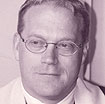“For the first five years of ministry, it felt like I was working hard to help the congregation members feel good about themselves again!”
That was my response when someone asked me about the goals of my preaching in the congregation I was called to serve right out of seminary. It was a classroom discussion in “Introduction to Preaching,” and I was once again trying to convince some seminarians that it was actually easier to preach every Sunday.
One can guess my rationale: rhythm of preparation, consistency of prayer and study, liberation for having to say it all in one week, immersion in the context of pastoral care, and the opportunity to consider, plan for, and contribute to the collective identity of the hearers of the Word.
I was called to a congregation of one hundred and thirty members that had lost sight of what they had to offer to a visitor who might wander in on Sunday morning. They knew they were small, shrinking, aging, and struggling. If the church was going to grow, we had to collectively discern our strengths.
Building the congregation’s self image through the shared preaching life was not just a nod to the power of positive thinking. It was a theological affirmation of the community as the Body of Christ and the celebration of the unique gifts given by God in the power of the Holy Spirit.
The challenge, to use the imagery of the Great Prayer of Thanksgiving, was to feast on the promise of the Body of Christ through Word and Sacrament, that we might be the Body of Christ in the world.
However, like many other pastors who stand before a congregation to preach, I have been influenced by a generation of homiletical theory that portrays the hearer of the Word in a rather individualistic fashion. Any “turn to the hearer” in sermon preparation is intended to better enable the hearer’s encounter with the gospel. In contrast, little attention is paid to the community’s identity as the Church, as the Body of Christ.
To put it in broader terms, there is not much in the literature that seeks to connect homiletical theory and ecclesiology. Pastors learn quickly and perhaps intuitively that while speaking to the heart of the hearer might still rest at the core of the proclamation of the gospel, the challenge of “building up the church” includes establishing, nurturing, and stretching the collective heart of the people of God.
In his book entitled Calvin’s Preaching, T.H.L. Parker points out that John Calvin defined the purpose of preaching as the glorification of God and the edification of the hearers of the Words. Edification for Calvin connotes building and growth. Growth describes both the listener’s life of discipleship and the congregation’s growth in membership and holiness.
While the specific goal of a particular sermon shall be influenced by a given biblical text, preacher and congregation share a common commitment to the broad purpose of preaching. The clear goal of the shared preaching life of pastor and congregation is “the building up of the believer in the knowledge and love of God and thus the building up of the Church into God’s holy Temple.”1
Building sermons that build the church begins with and presumes the pastoral relationship of preacher and congregation.
Too often congregations assume that when they call a pastor they are calling a prepackaged vision. A visionary pastor needs only to stand up and point to where the congregation must go. At the other extreme, pastors who settle for sermons that tend to one sheep at a time may find the flock never moving anywhere.
For those of us somewhere in between, building up the Body of Christ depends upon the hard work of the Holy Spirit, and the pastor and congregation discerning together where God is leading them.
1T.H.L. Parker, Calvin’s Preaching (Louisville: Westminster/John Knox Press, 1992, 52.

